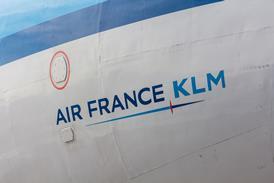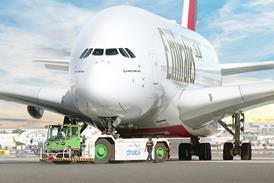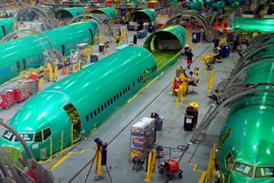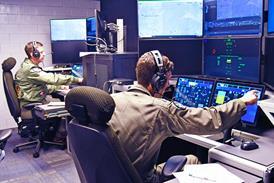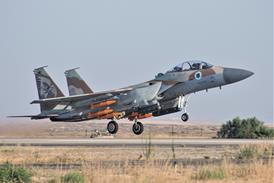Pratt & Whitney Canada is reaping the fruits of a policy of continual product development, combined with a close relationship with government and academia
Early 2007 saw a steady stream of around 300 new Pratt & Whitney Canada turbine engines a month packed into crates and shipped to airframe manufacturers around the world. Impressive though this may seem, it is just a temporary milestone on the road to even bigger numbers.
 |
|---|
With almost 43,500 PT6s delivered, P&WC hopes its PW600 family will be as successful |
P&WC knows it is fortunate to be riding the crest of not one, but several waves of prosperity running through the different aerospace sectors that its small and medium turboshaft, turboprop and turbofan families serve. Above all, the explosion in predicted deliveries from 2007 comes from having won positions for its new PW600 family on several high-volume light and very light jet programmes, not least the Eclipse 500 and Cessna Citation Mustang. Thanks to the VLJ, P&WC could be on track to repeat with a turbofan the successes racked up by its legendary PT6 family, 88 sub-variants of which have been produced and almost 43,500 delivered.
Technology development
But while the company has the good fortune to be surfing the same waves as its business jet, helicopter, military trainer and regional airliner partners, it is the architect of its own success thanks to a consistent policy of technology development. This strategy has seen the unprecedented certification of more than 50 new engines and sub-variants over the past 12 years, and the foundations laid for a further 18 new family members to join in the next three years.
Supporting this sustained focus on research and development is a close relationship with the Canadian federal and provincial governments, academia and other national bodies. The arrangement is a two-way street, says the engine maker, which annually contributes more than $1.5 billion to the nation's gross domestic product, soon to grow to around $2 billion. With manufacturing and engineering sites across the country, P&WC has more than 7,000 employees in Canada and additionally generates business for 1,500 suppliers from coast to coast.
Partnership for success
"We have had a partnership with the Canadian government that has taken various forms over the years," says P&WC executive vice-president John Saabas. "It's been a big part of our success, and in Canada we don't have a military environment to provide the background to technology development. We don't have a TF34/CF34 type of story, for example," he says, referring to the military origins of General Electric's popular CF34 turbofan.
For more than 30 years the chief mechanism for government R&D support was through the Defence Industry Productivity Programme. From 1996 until the end of last year this was succeeded by the Technology Partnerships Canada initiative, and a new government programme is expected to take over from this initiative later this year.
Under the rules set out by TPC, only a portion of the financing for each project was provided, with P&WC raising the rest from other sources. Assistance was provided in the form of repayable loans, with the average sharing ratio across all projects not to exceed 33% of costs and typically ranging between 25% and 30%.
Repayment terms were not based on a fixed period and interest rate, but instead negotiated case by case, usually taking the form of royalties based on gross company revenue. "The TPC scheme helps us invest in basic technologies that apply across a range of engine programmes," says Saabas. "These relationships have been an integral part of our success, and have been essential to enable us to have the business model we have."
Under the latest deal announced in December, just before TPC closed, the Ottawa government agreed to invest C$350 million ($300 million) in a five-year, C$1.5-billion P&WC R&D programme aimed at developing lighter, more fuel-efficient engine technologies. Of the investment, $137 million was put towards the C$367.5 million gas-turbine engine technology research programme. The balance of C$213 million was put into the engine maker's pre-competitive engine technology development programme, aimed at reducing the development cycle time to 24 months. Ultimately this will test new technology in demonstrator engines.
Alain Bellemare, president of P&WC and recently appointed executive vice-president, strategy and development, for the larger Pratt & Whitney, has described the five-year R&D programme as the "most important commitment made by P&WC in its history". The project includes Canadian universities and the country's National Research Council, which together with the engine company will develop analytical tools for predicting noise levels generated within combustors and exhaust ducts.
The landmark December deal also solidified P&WC's position as the number-one investor in R&D in Canadian aerospace, and among the top five in the country for all types of industries. P&WC estimates it accounts for almost 50% of all aerospace R&D spending in Canada and says: "Over the past 10 years we have invested more than C$3 billion in R&D, with an average of over C$400 million every year for the past five years."
The investment in universities represents around C$75 million in collaborative projects with 20 establishments over the next five years to develop new technologies and processes. "We expect to reach C$100 million in total university investments by 2011. Hundreds of students have worked on more than 600 projects for P&WC so far. We directly hire about 150 students every year," says the company.
"It's very economic for us to do this," says Saabas, who adds P&WC is also heavily involved in the Consortium Research Innovation Aerospace Quebec - which aims to promote pre-competitive research and development capabilities within the province by funnelling industry funding to universities. "We're leveraging money and working with students ahead of time, and ahead of when they graduate into industry," he says.
Military expansion
Beyond its internal Canadian relationships, P&WC is working on an increasingly close basis with "Big Pratt", its sister company Pratt & Whitney in East Hartford, Connecticut, as it looks to boost its military presence, as well as develop higher-power engines for business and regional jets. "Within the breadth of a global company like UTC there are big technological resources and a lot of good can come out of it because the Canadian government is not our top investor - maybe in the 20% range," says Saabas.
Within UTC it has always been agreed that 20,000lb thrust (90kN) is the dividing line between the responsibilities of P&W and P&WC, with the Canadian company covering the lower thrust levels. But with the emergence of Bombardier's proposed CSeries airliner and its 20,000lb thrust requirement, the two companies have joined forces to straddle what is "basically a grey line in the sand", says Saabas.
P&WC makes no secret of its desire to develop an engine in the 10,000-20,000lb thrust range, bridging the gap between its PW300 and P&W's PW6000. By its own admission, P&WC missed out on the regional jet market in the 1990s, and in 1999 kicked off plans for a PW800 family to "be ready for the next regional jet opportunities", and capitalise on new technology developments then being led by projects such as the Advanced Technology Fan Integrator.
Even at these early stages "we were working closely with P&W", says Walter Di Bartolomeo, vice-president engineering. "We had a team in East Hartford and we did a fan together. The ATFI was done here, but in collaboration with them." Since then, the technology demonstrator process has morphed to meet the 20,000lb thrust needs of new designs such as the CSeries at one end and, at the other, the emerging need for an engine in the 10,000lb-thrust range at business aircraft manufacturers such as Bombardier, Cessna and Dassault.
The result is a series of discrete demonstration initiatives under way to achieve a technology readiness level of six by the end of 2007, which will support the parallel development of a scaleable core for both ends of the thrust scale. "We're looking at developing data in between the two ends, and to scale appropriately for the two applications," says Bartolomeo.
"How do you develop technology that really is scaleable in terms of aerodynamics, structure and dynamic performance, and how do you execute on that mission?" he asks, but adds that they have encouraging news. "It's turning out to not be as complicated as we thought. We have developed the PW600 family into the 610, 615 and 617 - all with the same architecture, but at different scales. We're really just taking that philosophy to the next level."
Bartolomeo denies reports of a rift between the sister companies over the approach to the scaleable core, and the choice of a single- or two-stage high pressure turbine. Although it is thought P&WC originally favoured a single-stage HPT, and correspondingly lower number of HP compressor stages, the scaleable core will feature a two-stage HPT. "The two-stage HPT is the way to go. This is not a common core specifically, but scaleable," says Bartolomeo.
Market range
The smaller-scaled version will be aimed at the 9,000-13,000lb thrust range to embrace applications such as a Cessna large-cabin business jet, while a larger-scaled version in the 18,000-22,000lb range is being proposed for the CSeries with either a conventional low-pressure system or geared fan. "The range of this scale we think is reasonable," says Saabas. "We're also hitting the sort of numbers we wanted in rig tests," he adds.
P&WC is also, therefore, fully engaged in P&W full-scale geared turbofan demonstrator and will be performing combustor tests as part of the project. "We haven't decided where the turbine testing will be done yet, but we will fly the engine and do the gas generator testing," says Bartolomeo. Nozzle testing, noise and acoustic testing will be performed at P&W's West Palm Beach, Florida site. Ground tests are due to begin by the end of this year, with flight tests scheduled for 2008.
Source: Flight International

